

Align your work with your company's objectives to deliver products and services that meet your strategic goals. IT Business Management (ITBM) enables IT to show value to the company and optimize investments so that more resources can be focused on innovation. Lean execution techniques assist ITBM, transform the delivery of new products and services.
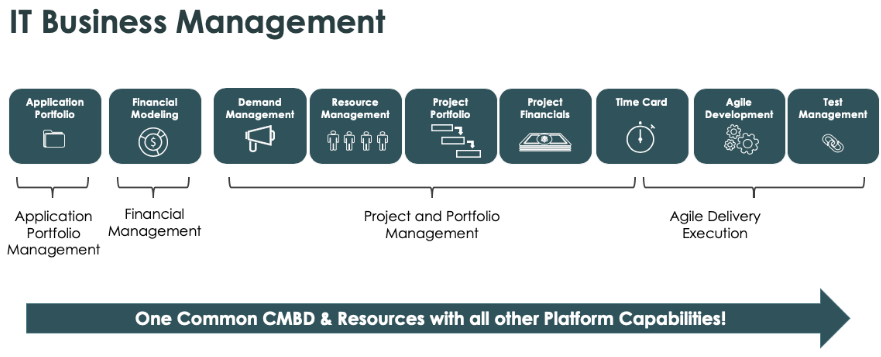
It's simple to anticipate essential business requirements, manage resources, and assess the value of your portfolio using IT Business Management. It also allows you to prioritize new requests and effectively deliver items. Assess associated top-level investments and modify as needed to make improvements. Reduce bottlenecks and manage strategic and operational work in one spot to get to market faster. ITBM enables you to better align your IT investment with the company's objectives, allowing you to achieve better results and respond to change more quickly.
Application Portfolio Management allows you to create a full inventory of all business apps in use, which can be used to evaluate your portfolio. This inventory contains data such as which functional modules are in use and the importance of an application to the business, in addition to the technical descriptions that emerge from discovery. Dashboards offer a wide array of indicators, including risk, quality, cost, business alignment, user satisfaction, and more.
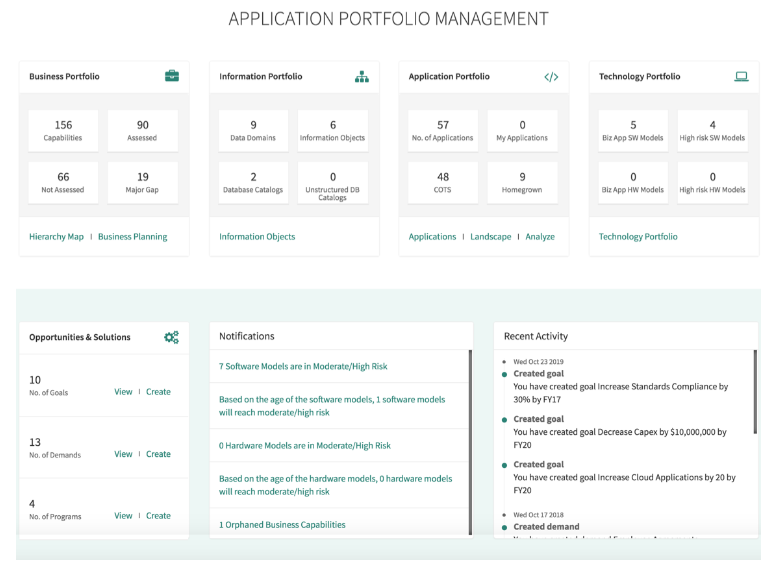
Create and manage a wide range of projects, from a few minor tasks to massive portfolios of projects with multiple linkages and dependencies. To guarantee that all project activities are captured, track, and manage events, issues, and change requests from a single system of record. Manage your product's release from conception to completion, including development and testing. With customizable dashboards and timeline visualizations, you can get better insight into projects and project portfolios throughout your whole organization.
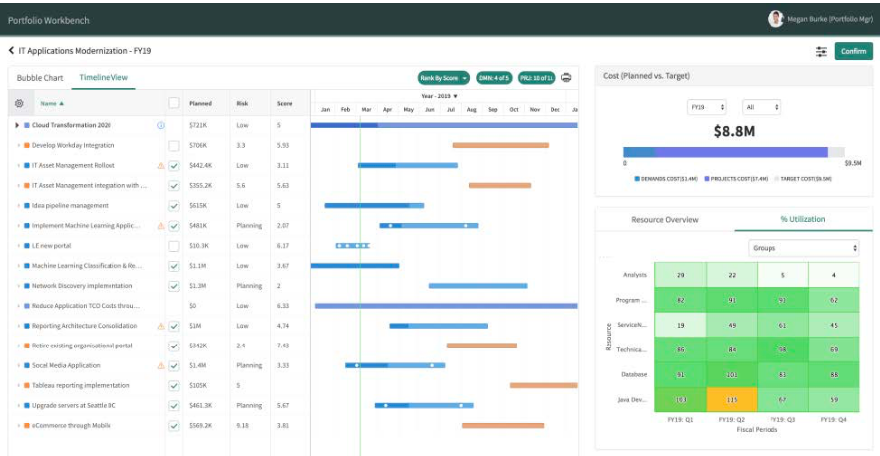
Employees may be a fantastic source of new ideas. With Innovation Management, you can use a single site to collect, vote on, vet, and monitor ideas. From a single place, engage your workers and promote creativity to accomplish business goals quickly and efficiently.
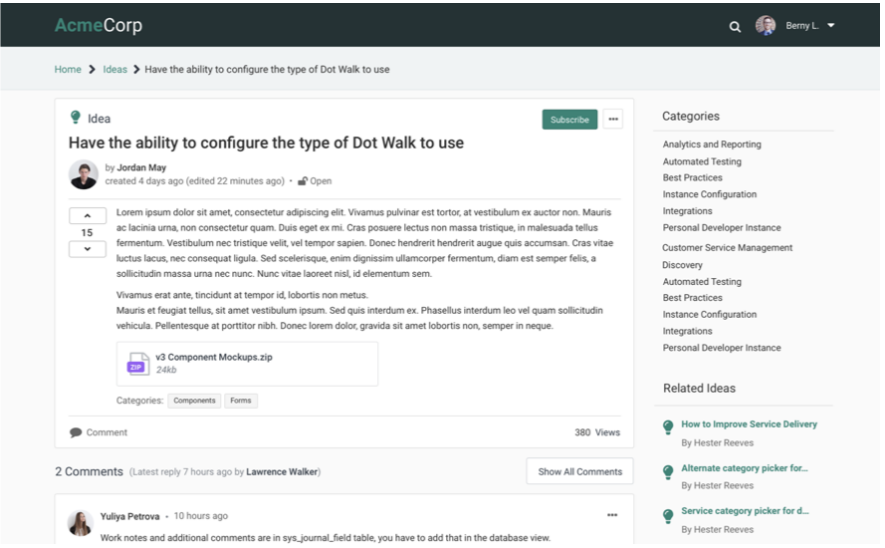
Support a continual planning process in a changing environment with Investment Funding. Prioritize and fund all of your investments, including projects, classics, products, and teams, regularly. Flexible top-down and bottom-up financing procedures make it easier for you to request and allocate resources to investments.
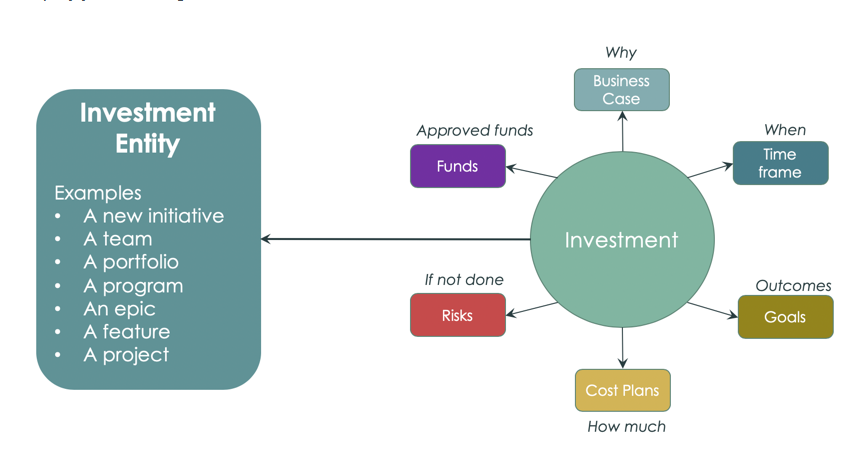
Using Agile software development methodologies, you may manage your product development activities throughout their life cycle. In the ServiceNow® Agile Development 2.0 application, the Scrum framework is employed to create an Agile software development environment for product-based or project-based activities. It gives you the option of utilizing a pure agile strategy throughout a product's life cycle or a hybrid approach that incorporates Agile methodologies into a traditional project structure.
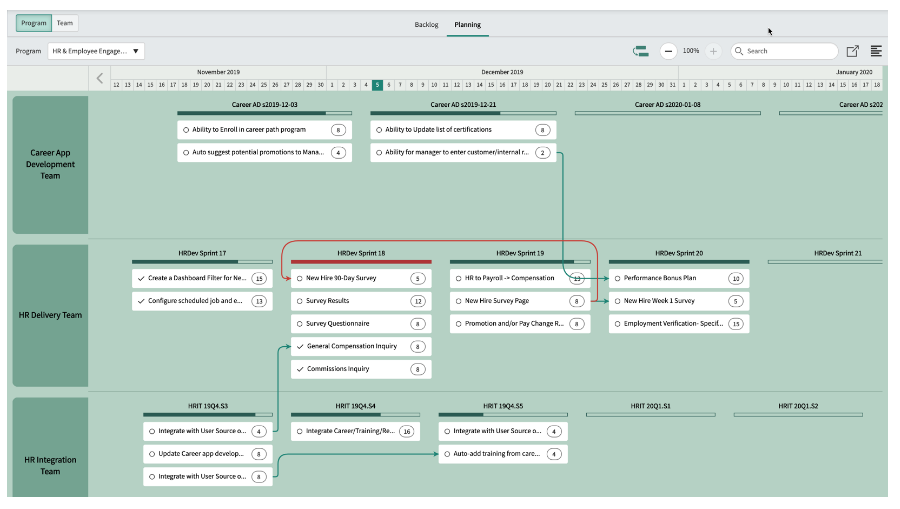
The ServiceNow® Scaled Agile Framework (SAFe) application enables you to apply Lean and Agile concepts to your big organization, allowing you to create and deliver software products with fewer defects in the shortest time possible. There are several applications and features of IT business management, but we'll discuss some of them.
In IT business management, machine learning accordance with the guidelines set in increasing business measurability and expanding operations. Businesses confront a problem in extracting useful information from a large set of raw data and generating valuable business insights due to the rising amounts of data. Because its algorithm is created using historical data, machine learning can be used to solve a variety of business problems. It helps organizations simply avoid duplicate or incorrect data into databases and allows them to calculate and analyze data much more quickly.
Machine-learning algorithms are used in Predictive Intelligence for Application Portfolio Management to anticipate, recommend, and drive the data result of newly onboarded applications.
While creating a need in the Demand form, the Predictive Intelligence for Demand Management feature searches for and displays comparable requests using machine-learning algorithms.
While submitting a new idea, the Predictive Intelligence for Innovation Management feature searches for and displays comparable ideas using machine-learning techniques.
Machine-learning techniques are used by the Predictive Intelligence for Project Management feature to search for and show comparable projects while establishing a new project using the project form. For project planning, you may also look for current projects and compare them.
To gain a comprehensive understanding of the applications used in your organization, use the ServiceNow® Application Portfolio Management (APM) application. It will help you identify redundancies and reduce budgetary costs. You can identify applications to modernize or upgrade by consolidating applications within the same business function. APM also assists you in determining whether to invest in, maintain, or replace applications based on business needs that are aligned with the organization's objectives. You can work with a lot of problems in the company, such as:
With these APM procedures, you may overcome these challenges, increase business functions effectively and seamlessly, and reduce costs:
Create a wide inventory of the business apps in use.
Determine the usage of the apps by assembling metrics like cost, risk, usage, and quality.
Evaluate the value of each app by assessing its importance and usage based on the metrics.
Either choose to invest in the application, keep it as is, replace it with another app, or retire it.
Deploy your decision by upgrading, retaining, or retiring the apps.
To allocate, manage, and report on costs in your business, use the ServiceNow® Financial Management application. The application comes with a workbench, which is a visual tool for extracting costs from your general ledger. It can also be used to process costs and map them to IT-related tasks. It can also be used to process costs and map them to IT-related tasks. Various statistics are also available to assist you in determining how much of your spending is connected to technology. Starting with the Fuji release, the Financial Management application is accessible. IT Cost Management includes the modules from the Financial Management application before the Fuji release.
By managing and tracking software development life cycles in an iterative, incremental, and flexible manner, the ServiceNow® Agile Development solution helps you deliver software projects more effectively. There is a gap between additions and fixes, origination activities, change procedures, and deployment when you have multiple standalone tools for innovation, debugging, and project tracking. Agile Development combines various procedures from the software development life cycle into a single solution. Agile Development handles scrum or waterfall development and assists you in managing the backlog of activities from conception through testing and deployment. Finally, you'll have better visibility into the whole software development process. Following are the exceptions of Agile Development:
Important: Activation of the Agile Development 1.0 plugin (com.snc.sdlc.scrum.pp) is no longer possible. Activate the Agile Development 2.0 plugin (com.snc.sdlc.agile.2.0) to improve your agile software development skills.
Agile Development 2.0 allows for agile execution. It uses the scrum agile framework to create an agile software development environment for product-based or project-based activities. Provides the option to use a pure agile strategy throughout a product's life cycle, or a hybrid approach that incorporates agile methodologies within a conventional project structure. Capabilities are always being improved so that you may use agile to improve your software development efforts. Consult the following information and table carefully to match your service level with the Agile Development application that best suits your needs.
The ServiceNow® Cost Management app keeps tabs on the costs of configuration items. Costs can be assigned to business units and reported on it. Financial Management was the previous name for this application. Financial Management and Finance Service Automation are two more financial management apps offered in this version. These functionalities are enabled via cost management:
To plan and control business costs, use the cost management techniques listed below.
By connecting the two systems, you can enable bidirectional record synchronization between Microsoft Azure DevOps and ServiceNow® Agile Development 2.0. When you update a record in Azure DevOps, the change is reflected in Agile Development. Similarly, if you make a change in Agile Development, it will appear in Azure DevOps. You can accomplish the following things using Azure DevOps and Agile Development:
Microsoft Azure DevOps Integration for Agile Development now enables process-level map setup, allowing you to synchronize multiple processes with Agile Development starting with version 1.3.
Every beautiful relationship starts with a simple hello. So let’s chat. It might just be the start of something memorable.

